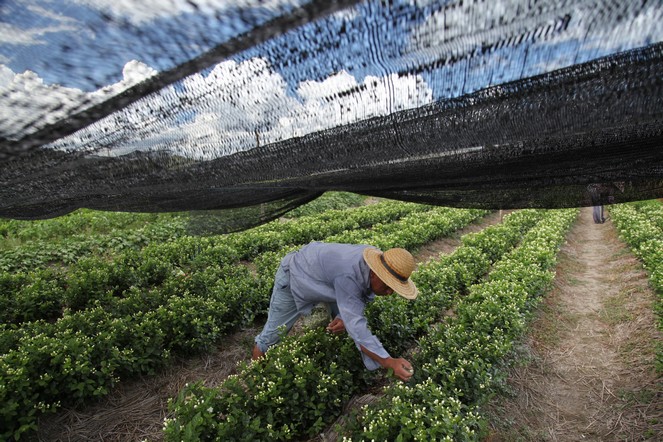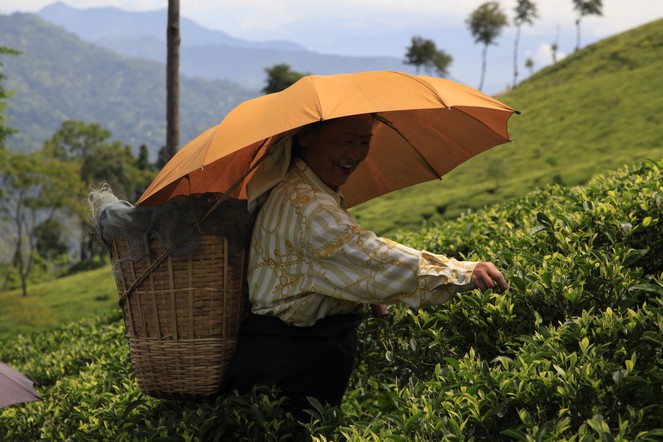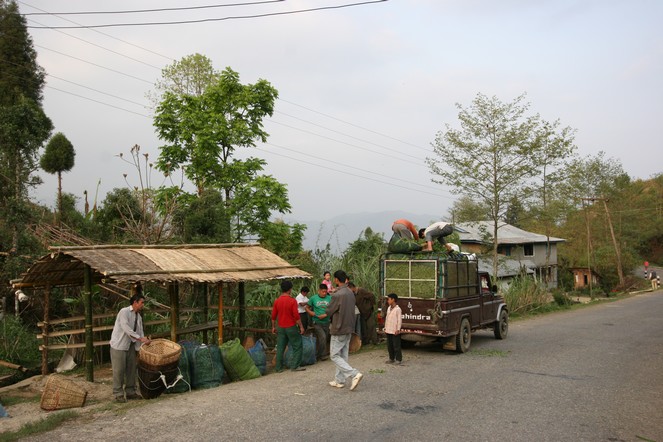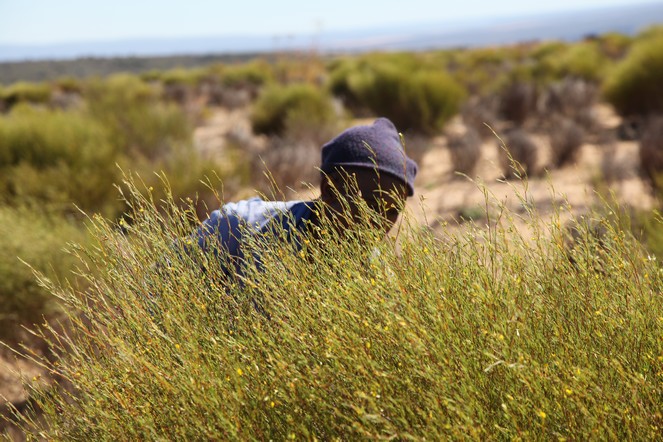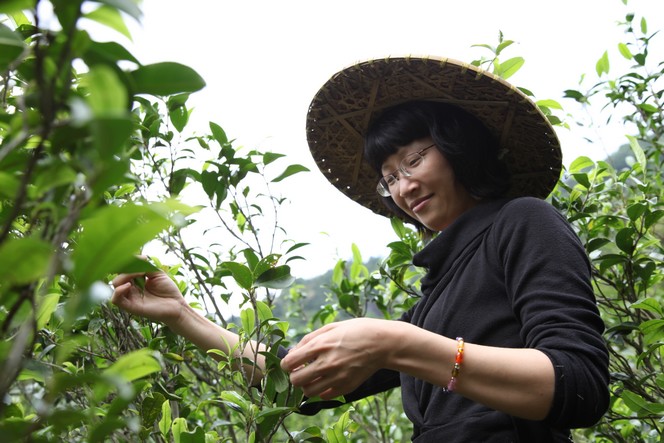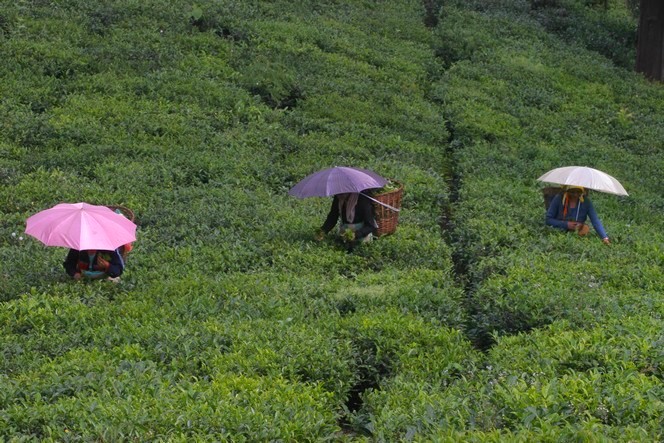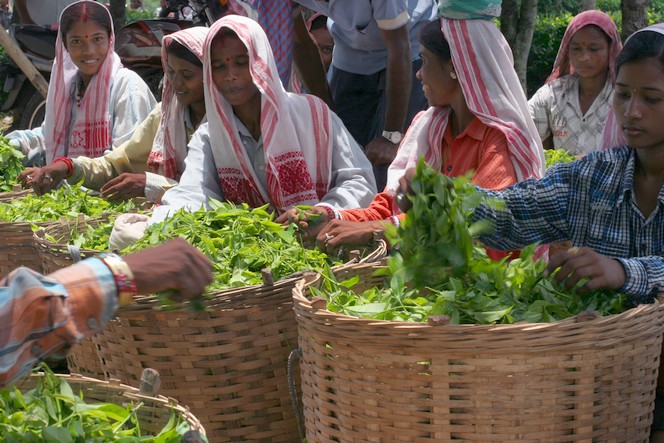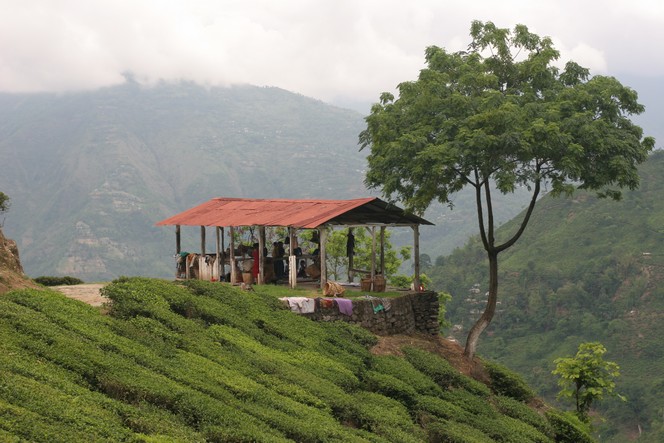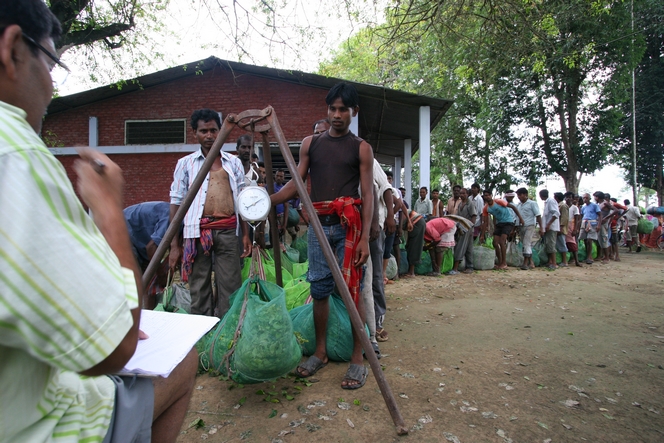It is difficult to imagine the amount of work that goes into making the tea we drink. To produce one kilo of a top quality jasmine tea, for example, it takes 2.5 kilos of jasmine flowers, no less. With 100 flowers, you can make just 25 grams. So no fewer than 10,000 flowers, individually picked by hand, are needed to scent a kilo of tea. And the plucking of flowers in the time-honoured tradition, which I witnessed last week in southern China, sometimes takes place in scorching temperatures.
Harvest
Start of the “second flush” harvest in Darjeeling
The tea harvest in the south of Sri Lanka
Sometimes the people who harvest tea don’t have the necessary equipment to process the leaves. In this case, they sell their crop to another farmer who is able to process it.
This is what happens in the south of Sri Lanka, where each tea factory dispatches vehicles to collect bags from small producers.
The rooibos harvest in South Africa
The rooibos harvest has begun, and I am happy to be here. The harvest lasts less than two months. South Africa is the only country that produces rooibos, a plant sometimes known as “red tea”, but which is not a tea at all.
Rooibos is rich in antioxidants and is completely free of caffeine. It is my favourite drink before going to bed.
A winter harvest in Sri Lanka
The low sun illuminates these bags filled with freshly plucked tea leaves, creating a contrasting effect of light and shadow. The men work quickly, emptying the bags and spreading the leaves out on withering trays, so that there is no risk of them fermenting.
In some regions of Sri Lanka, tea is harvested at this time of year.
Plucking tea from full-sized tea plants
There are few places in the world where tea is harvested from full-sized tea plants. On most plantations the camellia bushes are maintained at waist height. However, in regions where Pu Ers are produced, as well as here on Feng Huang mountain (China), the leaves of large tea plants are considered to have a superior aromatic quality.
If you have never tasted them, I suggest you try Dan Cong Wu Long as well as the oxidised Dan Cong – both are exceptionally subtle. They come from these large tea plants and were plucked by Mrs Huang, pictured here hard at work.
Tea pluckers bringing out their umbrellas
With the weather we’ve had this June, there has been no need to worry about sunstroke. This is not the case everywhere. For example, in Darjeeling this season, when the pluckers have brought out their umbrellas it has been to protect themselves from the sun, not the rain. The women have good taste in their choice of bright, varied colours, making this landscape very similar to a cup of Darjeeling itself. Its floral, flowery, vegetal notes are a real treat for the palate.
Pluckers checking the quality of their work
At the end of every morning and afternoon during the harvest, the women gather to get their leaves weighed. It’s an opportunity to relax, and everyone talks, unless they want to listen to what the others have to say. Of course, if they find a stranger like myself among them, as they did that day, their tongues wag even faster, accompanied by plenty of laughter.
While listening to their colleagues joking, the pluckers run their hands through the leaves to check the quality of their work. The pretty red and white fabric these women wear on their heads is typical of their region: Assam.
This shelter is where the pluckers gather
When it is time to take a break, the pluckers in Darjeeling gather in the shade to drink tea or eat their meals. We would all love to be able to have lunch every day in such a peaceful setting…
These shelters are also where the pluckers take the leaves to be collected and weighed. Once gathered together, the leaves are loaded onto a trailer and a tractor promptly tows them away to the factory for processing.
Tea pluckers gathering to get their bags weighed
In the middle of the day, as soon as the plucking is finished, the workers gather to get their bags weighed.
Here, at Dufflating (Assam), everyone waits in turn and one by one hangs their bag of tea leaves on the mobile scales. The supervisor records the worker’s name and the weight of the bag, which will determine the pay for that day. You can see that the bags are made of netting, to prevent the leaves from oxidising. They must remain in perfect condition all the way to the factory, otherwise the tea will be spoiled.

